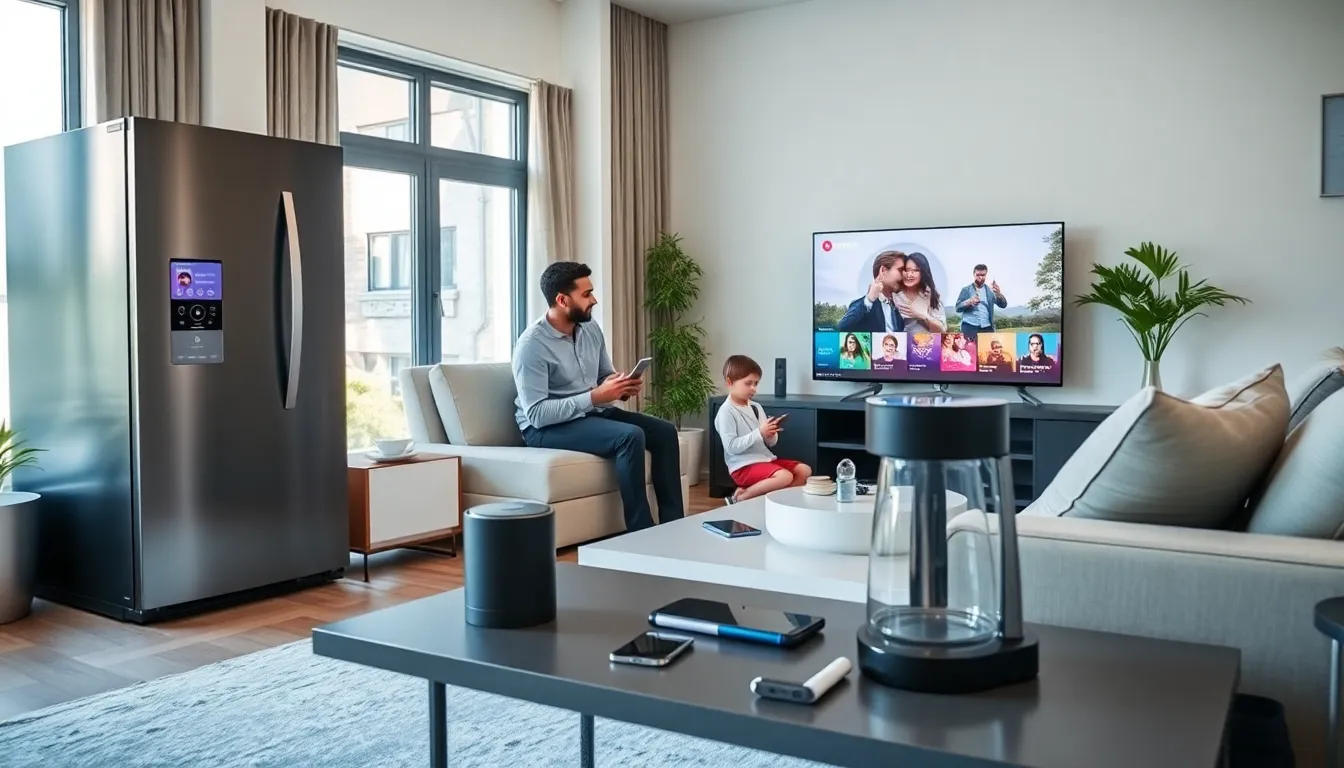Ever tried to figure out the perfect gadget to complement your life? Consumer electronics can be a bit like dating: there are plenty of options out there, but sometimes finding the right match feels like a full-time job. Fortunately, consumer electronics solutions serve as the ultimate wingman, helping people navigate this complicated but intriguing realm. Immerse with us as we explore these solutions, their growing demand, and the trends shaping the future of technology, all with a sprinkle of humor and a dash of solid advice.
Table of Contents
ToggleUnderstanding Consumer Electronics

Consumer electronics encompass a wide array of devices that enhance daily life, from smartphones to smart refrigerators. These gadgets are designed to make tasks more straightforward and enjoyable, effectively blending functionality with entertainment. From content streaming devices that keep users glued to their screens, to home automation systems that can control everything with just a few taps, consumer electronics are indispensable in modern living.
Arguably, understanding consumer electronics starts with recognizing the needs they satisfy. Every day, consumers look for electronic solutions that make their lives easier, whether it’s sending texts, binge-watching a series, or brewing the perfect cup of coffee before work. This constant evolution leads to an ever-expanding ecosystem of devices, each aiming to outdo the previous model.
Also, one must keep in mind that the landscape of consumer electronics is as dynamic as the devices themselves. Innovations emerge at a breakneck pace, changing not just what we use, but how we live. Grasping this reality allows us to appreciate not only how far we’ve come, but also where we might be headed.
The Growing Demand for Consumer Electronics Solutions
The demand for consumer electronics solutions has skyrocketed in recent years, and it doesn’t look like it’s slowing down anytime soon. With the introduction of remote work, the need for seamless technology solutions has become apparent. Imagine trying to juggle video calls while your Wi-Fi drops, nightmare material.
This surge in demand pushes companies to innovate and offer solutions tailored to various consumer needs. Whether it’s people seeking high-quality audio equipment for clearer conference calls, or families wanting integrated smart home systems to manage their home efficiently, the market responds. Consumers now expect reliability and efficiency from their gadgets, leading to rapid advancements across all sectors of technology.
Also, the pandemic accelerated trends already in motion. Consumer behavior shifted significantly as individuals sought gadgets that could enhance their home environment. From transforming spaces into remote work havens to creating enjoyable home entertainment setups, the right consumer electronics solutions have become essential.
Key Types of Consumer Electronics Solutions
When discussing consumer electronics solutions, it’s important to categorize them for easier understanding. Here are crucial segments that continue to redefine our tech landscape:
Innovative Technologies Shaping Consumer Electronics
From artificial intelligence to the Internet of Things (IoT), innovative technologies are the heartbeat of consumer electronics solutions. AI, for instance, has empowered devices to learn consumer habits, offering personalized recommendations. Say goodbye to endlessly scrolling through streaming options: now, smart TVs can suggest shows based on your viewing history.
The IoT facilitates the interconnectivity of devices, creating a streamlined experience. Want to adjust your thermostat while you’re still in bed? No problem. Smart home devices can talk to one another, giving consumers unprecedented control over their environments.
Personalization in Consumer Electronics
In an age where “one-size-fits-all” is more of a myth, personalization in consumer electronics is more relevant than ever. Brands focus on providing customized solutions, offering everything from adjustable smart speakers that cater to individual sound preferences, to wearable tech that tracks personal fitness goals.
This emphasis on personalization mirrors broader consumer expectations: people want products that resonate with their unique needs and lifestyles. As a result, consumer electronics solutions have increasingly focused on enhancing user experience through tailored features, ensuring each gadget fits like a glove.
Challenges in the Consumer Electronics Industry
Even though the booming demand for consumer electronics solutions, the industry does face its own set of hurdles. Supply chain disruptions remain a significant challenge, especially following recent global events. Shipping delays and shortages leave companies scrambling to meet consumer needs, leading sometimes to inflated prices. Also, the influx of new technologies can also lead to confusion in the marketplace.
Another challenge is consumer privacy concerns. As devices become more interconnected, the risk of data breaches looms larger. Users are becoming increasingly aware of how much of their personal data is collected, leading to calls for more transparent practices from manufacturers.
Finally, the lifespan of consumer electronics poses a dilemma. While manufacturers constantly push new models, older devices often end up in landfills, contributing to electronic waste and environmental issues. Hence, sustainable practices are becoming critical as consumers demand more eco-friendly solutions.
Future Trends in Consumer Electronics Solutions
Looking ahead, the evolution of consumer electronics solutions appears exhilarating. As AI and machine learning become increasingly sophisticated, expect even greater personalization. Devices will know users better than they know themselves, anticipating needs and suggesting solutions without any prompts.
The integration of augmented reality (AR) and virtual reality (VR) stands to revolutionize the consumer electronics market. Imagine trying on clothes virtually or rearranging furniture in your home using a VR headset before making a purchase, now that’s shopping made easy.
Also, sustainability will play a defining role in future solutions. Companies are now prioritizing eco-friendly practices, from using recyclable materials to creating energy-efficient products, resonating with a growing consumer base focused on environmental responsibility. Innovative take-back programs are also gaining traction, encouraging people to return outdated devices for a greener solution.
